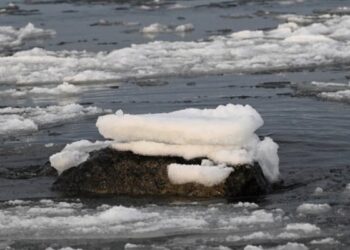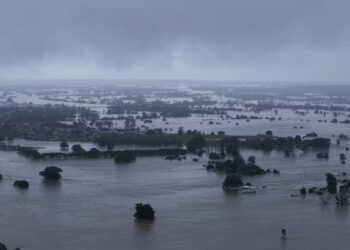According to a report released on Monday, snowfall in the Hindu Kush-Himalayan mountain range has plummeted to a 23-year low, posing a significant risk to nearly two billion people who rely on snowmelt for their water supply.
The Hindu Kush-Himalayan range, which extends from Afghanistan to Myanmar, contains the largest reserves of ice and snow outside of the Arctic and Antarctic, serving as a crucial freshwater source for around two billion individuals.
Researchers have observed “a noticeable decrease in seasonal snowfall across the Hindu Kush-Himalayan region,” with snow persistence (the duration that snow stays on the ground) reported to be 23.6% below the average, marking the lowest levels recorded in over two decades, as mentioned in the International Centre for Integrated Mountain Development (ICIMOD) report.
This trend continues for the third consecutive year and jeopardizes the water security of nearly two billion people,” the Snow Update Report stated.
The study also highlighted concerns about “potential decreases in river flows, increased reliance on groundwater, and a higher risk of drought.”
Sher Muhammad, the lead author of the ICIMOD report, informed AFP that “this year, snowfall commenced late in January and has been below average during the winter season.”
Many countries in the region have already issued drought alerts, indicating that upcoming harvests and water access are at risk for populations facing longer, hotter, and more frequent heatwaves.
The inter-governmental ICIMOD organization comprises member countries: Afghanistan, Bangladesh, Bhutan, China, India, Myanmar, Nepal, and Pakistan.
It has called on nations dependent on the 12 significant river basins in the region to establish “better water management, enhanced drought preparedness, improved early warning systems, and increased regional cooperation.”
Notably, the Mekong and Salween basins—the two longest rivers in Southeast Asia that provide water to China and Myanmar—have lost approximately half of their snow cover, according to the report.
Pema Gyamtsho, ICIMOD’s director general, emphasized the need for policy reforms to tackle the long-term decline in snow levels.
“Carbon emissions have already set us on an irreversible path of recurring snow anomalies in the HKH (Hindu Kush-Himalayas),” Gyamtsho remarked.
The United Nations’ World Meteorological Organization has identified Asia as the region most impacted by climate-related disasters, noting that five of the last six years have seen unprecedented glacier retreat.





